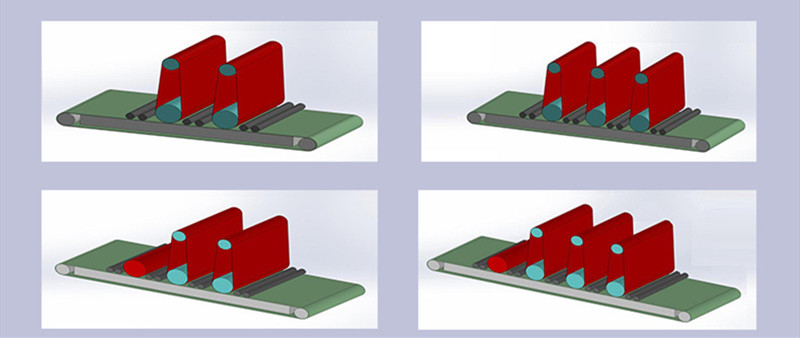Wide Belt Sanding Machine: Essential Equipment for High-Precision Metal Finishing
Introduction
In today’s industrial world, surface quality and dimensional accuracy are not just aesthetic requirements—they are key performance indicators. For metal fabricators, manufacturers, and job shops, maintaining consistent edge quality, surface finish, and flatness across large volumes of parts is critical. One machine that meets all these demands with high efficiency and reliability is the wide belt sanding machine.
Whether you're processing stainless steel panels, aluminum plates, or carbon steel sheets, a wide belt sanding machine offers powerful and repeatable finishing performance. This article explores everything you need to know about this indispensable machine: its definition, structure, common applications, advantages, and use in metal processing.
What Is a Wide Belt Sanding Machine?
A wide belt sanding machine is an industrial surface finishing system that uses large abrasive belts to sand, grind, deburr, and polish flat or sheet-type materials. The term “wide belt” refers to the broad sanding belt (ranging from 400mm to 1650mm or more), allowing it to handle large workpieces in a single pass.
Although wide belt sanders are also used in woodworking, in metalworking they are optimized for applications such as:
Laser cut part deburring
Surface finishing of stainless steel, aluminum, and carbon steel
Oxide layer removal
Edge rounding and slag removal
These machines ensure that metal parts meet high standards of flatness, surface uniformity, and edge smoothness—vital for subsequent processes like welding, painting, or assembly.
Core Components of a Wide Belt Sanding Machine
A wide belt sanding machine consists of a robust frame and several integrated modules, each serving a specific function in the sanding process:
1. Abrasive Belt Unit
At the heart of the machine is the abrasive belt system. This belt, mounted on rotating drums, removes material from the surface with controlled pressure. Belts come in various grits depending on the task: coarse grits for heavy removal, fine grits for polishing.
2. Conveyor Bed
The conveyor supports and moves the workpiece through the machine. Some systems include vacuum beds or magnetic tables to hold smaller or thinner pieces securely during sanding, especially important for metal parts.
3. Contact Drums or Sectioned Pads
These components press the abrasive belt onto the material. For metalworking, electronic sectioned pads allow precise control of pressure across the workpiece to accommodate contours and avoid overgrinding.
4. Brush or Roller Modules (Optional)
Many modern machines include additional brush heads—rotating, orbital, or planetary—used for edge rounding, oxide removal, or secondary surface treatment. This is particularly useful for complex parts or parts with inner holes.
5. Cooling and Dust Extraction
In wet sanding machines, a coolant system helps dissipate heat and manage debris. In dry sanding machines, built-in dust collectors or external vacuum systems remove fine metal dust to ensure a clean, safe environment.
6. Control System
Digital HMI (Human-Machine Interface) panels allow operators to control variables like belt speed, feed rate, brush rotation, and thickness adjustment. Many machines feature servo-driven automation and recipe storage for repeatability.
Typical Uses of a Wide Belt Sanding Machine
Wide belt sanding machines in metalworking are used for a variety of processes:
Deburring: Removing sharp edges, splatter, or roughness after cutting.
Edge Rounding: Creating an R radius on external and internal edges (typically up to R2).
Oxide Removal: Cleaning oxidized edges after laser cutting.
Slag Removal: Eliminating hardened slag from flame or plasma-cut components.
Surface Grinding: Achieving a uniform, flat finish across the surface.
Brushed Finishing: Applying a satin or hairline texture to stainless steel or aluminum.
Industries such as sheet metal fabrication, appliance manufacturing, aerospace, shipbuilding, and construction rely on wide belt sanding machines for daily operations.
Advantages of Wide Belt Sanding Machines in Metal Processing
✅ 1. High Consistency
Machines ensure uniform results, even across hundreds of parts, eliminating inconsistencies common in manual grinding.
✅ 2. Improved Productivity
Multi-head configurations (e.g., belt + brush) allow multiple operations in a single pass, reducing processing time.
✅ 3. Enhanced Edge Quality
Edge rounding modules help create safe, coated-ready parts while maintaining tight dimensional tolerances.
✅ 4. Safer Working Environment
Enclosed systems with automatic feed, dust management, and wet processing options reduce exposure to dust, sparks, and injury.
✅ 5. Cost Efficiency
Although the initial investment is higher than manual equipment, reduced labor, lower consumable usage, and faster cycle times deliver excellent ROI.
✅ 6. Automation Ready
With CNC controls, recipe storage, and remote diagnostics, wide belt sanding machines can be integrated into automated production lines and smart factories.
Applications in the Metalworking Industry
In metal fabrication, wide belt sanding machines are used at multiple stages:
Post-cutting: After laser, plasma, or flame cutting to remove burrs and slag.
Pre-welding: To clean surfaces for strong weld joints.
Pre-coating: To ensure consistent adhesion of paint or powder coat.
Final finishing: For aesthetic surface treatment and branding requirements.
Some machines are also used for preparation of non-ferrous metals, including aluminum extrusion deburring and copper sheet polishing.
Conclusion
A wide belt sanding machine is more than just a sander—it's a complete surface finishing solution for modern metalworking. From deburring and oxide removal to fine surface grinding and brushed finishing, these machines ensure your parts meet functional and visual standards. With growing demand for automation, precision, and throughput, investing in a wide belt sanding machine is a smart choice for manufacturers looking to enhance quality and stay competitive.










